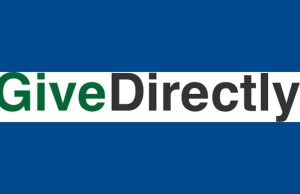The vast majority of nonprofits have great, dedicated and committed executives and wonderful individual board members. Yet, one of the most common questions asked is “how do we create a high performing board as a whole?”
There appears to be general agreement on the need for a high-performing board, but not as much discussion on the characteristics of high-performing boards and how to overcome the common obstacles toward its achievement.
The following are characteristics of a high-performing board:
- The CEO and chair fully engage the individual board members;
- The board practices effective governance, especially related to recruitment and reappointment;
- Board leadership succession is an integral part of the culture;
- There is a strong focus on performance, results and measures of success;
- There is constant communication to key stakeholders on the organization’s achievements;
- The board actively participates in fundraising; and,
- The board assesses and measures its own performance.
The most common obstacle to becoming a high performing board is the lack of engagement of individual members of the board. How many of you have observed highly intelligent and successful board members leave their common sense and knowledge at the door during meetings? This is often caused by a lack of effective communication on what you really want from your individual members and by a failure to find a way to engage them to make their experience as meaningful and fulfilling as possible.
It is the job of the CEO and chair to find a way to engage each and every member of the board to participate and contribute to the organization’s success. One of the ways to engage your members is to ask them for their ideas and encourage them to ask questions. If your members are only asked to fulfill their fiduciary responsibilities you are not allowing them the opportunity to feel a sense of “ownership” of the organization. The key to engaging your board is to ask them for their advice and suggestions.
Another common obstacle is the failure to develop effective board recruitment and reappointment processes. The most effective way to “recruit” new members is by developing an ideal board matrix of “sought after expertise” and compare this to the mix of expertise currently on the board. The “gap” should be your priority for new members.
Next, develop a list of area corporations, businesses and organizations that you would like to have on your board. Based on your “priority expertise,” begin to contact the organizations listed above to determine if they know of someone who might be interested in serving on your board. A key is to recruit individuals that will improve the profile of your organization and not just another “warm body with a beating heart.” Far too many organizations fail to effectively create a formal reappointment process for deciding who will be recommended for another term. This is true for organizations of all sizes.
Develop board-approved criteria on what is expected for each member for reappointment. This might include attending a certain number of meetings, actively participating in special events and fundraising, being an effective ambassador, etc. The key is to inform each and every member at the time of initial appointment on what is expected and what is the process for being reappointed to the board.
It is not easy to remove a “nonperforming member” but it is much easier to do when you can refer to previously communicated board-approved criteria.
Another key to developing a high performing board is to develop and monitor annual organizational measures of success. Organizations that focus on performance and results and not just on processes are more likely to engage their boards and be more successful. If you are having obstacles in this area a full discussion should take place at your next board meeting or retreat. A key question to ask yourselves is “what are your measures of achieving your vision?” High performing boards can easily articulate the progress your organization is having in achieving its vision. In addition, you need to ensure that you are effectively communicating your achievements to all of your stakeholders on a regular basis. People want to be associated with a “winner.” In today’s competitive economic climate, the ability to “toot your own horn” is a powerful tool.
The inability of many boards to actively participate in fundraising is another common obstacle. The more your organization focuses on your achievements, successes and results, the more likely your board will want to ask people to invest in your success. High performing boards are transitioning from asking for money for your organizational “needs” to investing in your achievements and success.
Finally, while good boards perform annual evaluations on their chief executive, great boards assess their own performance on a regular basis. The traditional method of board evaluation is to ask them to complete a questionnaire and discuss the numeric results.
Though this might highlight a few areas needing improvement, a questionnaire rarely gets to evaluate the individual level of engagement of the board. To dramatically increase the performance of the work of your board, you need to assess the level of engagement and motivation of the individual members. Only through actively engaging and motivating members of your board can you truly achieve a culture of success and high performing boards. E
Dennis Miller is an expert on nonprofit board governance, leadership development and strategic visioning. He is the author of A Guide to Achieving New Heights: The Four Pillars of Successful Nonprofit Leadership and The Nonprofit Board Therapist: A Guide to Unlocking Your Organization’s True Potential. His email is [email protected]











